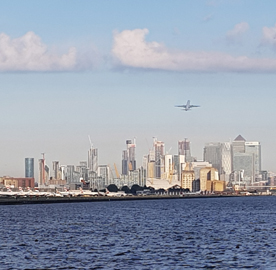ISO 31030 is a new international standard for travel risk management. As that implies, the guidance document takes the principles of risk management, and applies them in particular to travel risk, of interest to Professional Security magazine readers in terms of corporate business travel – the employer has a duty of care to the travelling employee, but is it for the security department, or HR, or a specialist business travel manager, to handle?
And what of bleisure – business travel combined with some leisure – that was around before covid; but has become yet more prevalent as overseas travel has become more difficult. Where does the employer’s responsibility to the traveller begin and end? That was a question posed by Bob Quick, the former senior UK police man, now of Global Secure Accreditation who sat on the UK BSI travel risk committee, that Rico Luzzi (see separate article) represented at ISO level.
Speaking recently to the International Security Expo at London Olympia, he pointed to past terror attacks – such as Mumbai in 2008, including on hotels; and in Tunisian against resort holiday-makers in 2015 – as a driver for the newly-published standard. The threats, he said, are more complex and intense; and more difficult to protect against and manage. There is besides 24-hour media reporting of cases; and more litigation afterwards.
The attitude of travellers has changed, Bob Quick said; instead of thinking, ‘it won’t happen to me’, it’s now ‘it might happen to me’. While hotels may be reticent about talking about their security, their customers are looking for reassurance that hotels do take the security of guests seriously. Hence the need for independent assurance. Many discharge their duty of care well; but the ISO guidance in 31030 should be able to spread good practice, he said, and make it much more visible to the corporate world, and all those involved in the safety and security of travel.
The standard covers travel from when it’s authorised, including mode of transport to response if something does go wrong: whether a natural disaster or act or terror, or (more often) a traffic accident or illness. Bob Quick spoke of how a corporate should have a policy in place, to cover if a traveller is equipped to navigate a place – such as a country with a high crime rate; and to include for example a change in itinerary, which might mean a more risky mode of transport – such as to a helicopter in a mountainous area.
More on ISO 31030 in the December print edition of Professional Security magazine. To purchase a copy of 31030, visit the International Organization for Standardization (ISO) website. For more background, visit https://www.iso.org/news/ref2730.html.
Picture by Mark Rowe: jet taking off from London City Airport, summer morning.










